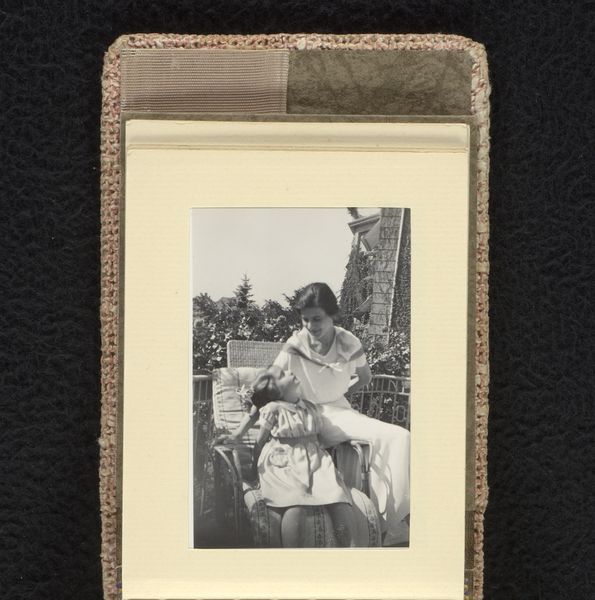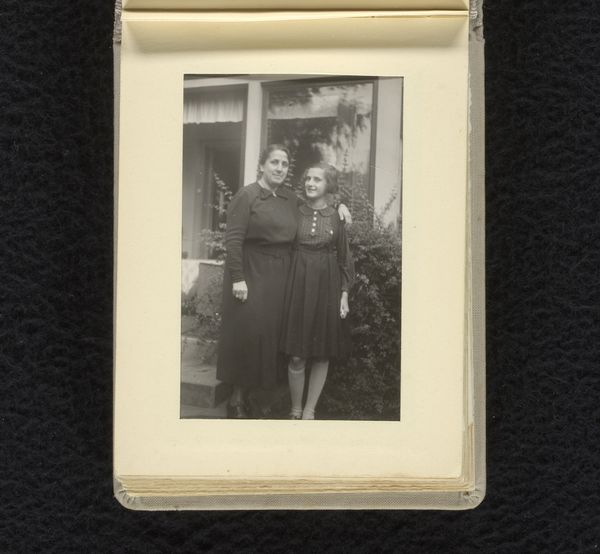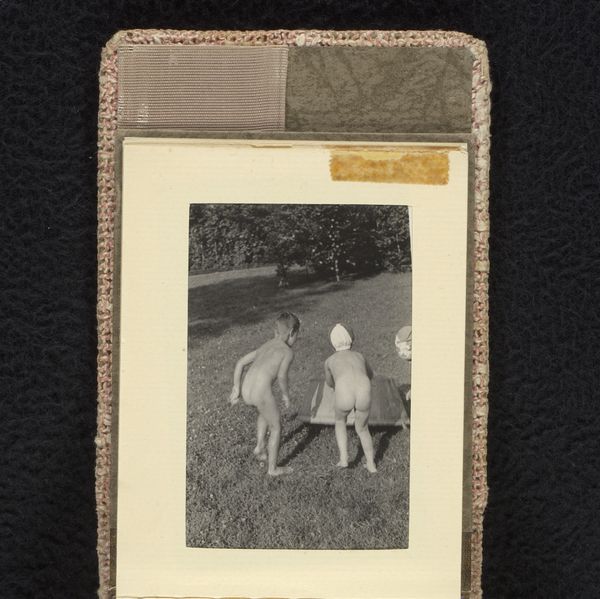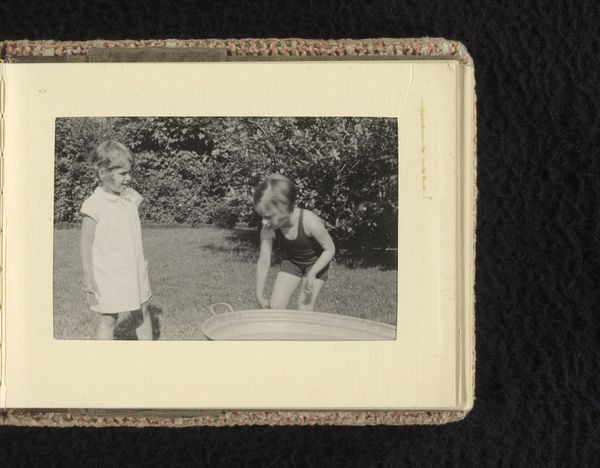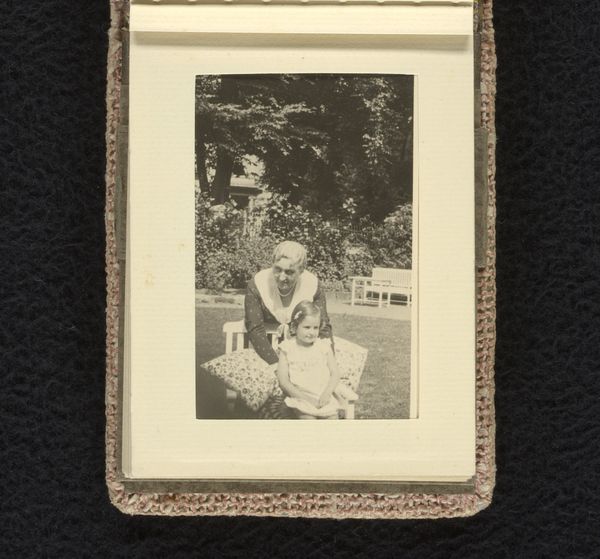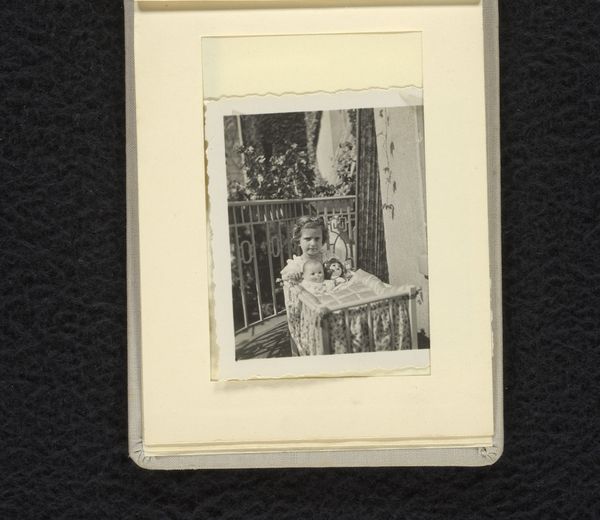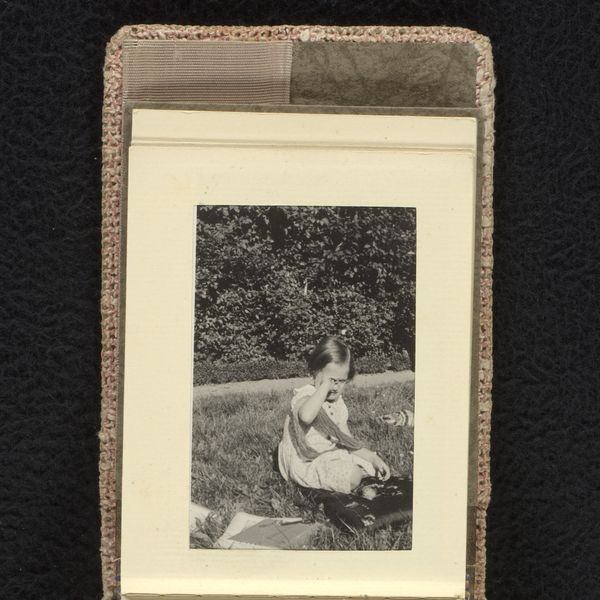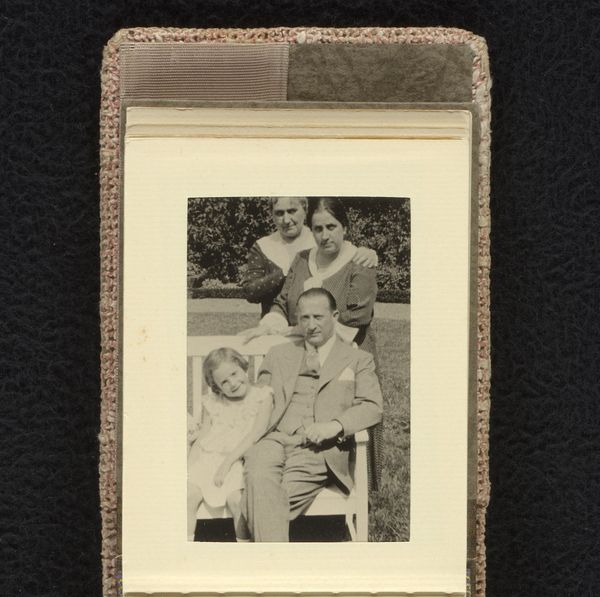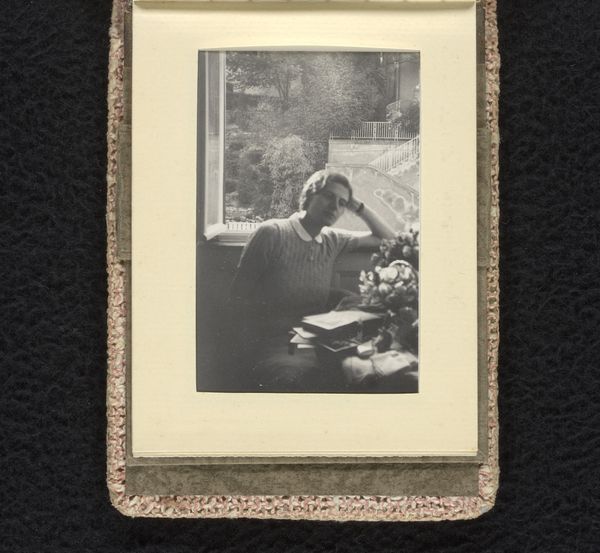
Isabel Wachenheimer speelt op de rug van haar moeder Else Wachenheimer-Moos, juni - augustus 1933, Hamburg Possibly 1933 - 1937
0:00
0:00
photography
#
portrait
#
mother
#
muted colour palette
#
photography
#
framed image
#
statue
Dimensions: height 65 mm, width 92 mm, height 80 mm, width 106 mm
Copyright: Rijks Museum: Open Domain
Curator: What strikes me immediately about this photograph, entitled "Isabel Wachenheimer speelt op de rug van haar moeder Else Wachenheimer-Moos, juni - augustus 1933, Hamburg," is its intimate scale, it seems to be housed in an album. There is an innocence, and even a lightness that emanates from the central figures, it appears they are playing. Editor: Indeed, at first glance, it conveys warmth, a tenderness that radiates from the bond between mother and child. But seeing this through the lens of history, I am struck by how this scene plays against the backdrop of its time. The date alone suggests a brewing storm in Germany. Curator: Yes, the symbolism is stark. The mother carrying her child becomes a vessel of comfort and joy. We see here Else as the steady and secure foundation for young Isabel. Even the backdrop – what seems like a thriving garden – provides an important context; one of an idyllic home life. What’s especially interesting to me is how, photographically, light becomes symbolic, especially given the turbulent environment surrounding the family. Editor: And knowing what we do about the rise of National Socialism, we might consider this photograph a conscious act. The family was Jewish and this photographic act, taken perhaps between 1933 and 1937 in Hamburg, may stand as a small act of defiance, a quiet resistance against erasure. The photograph in itself serves to declare: we were here, we loved, we lived normal lives. Curator: I’m drawn back to the formal qualities. How the light catches Isabel’s dress. How the pose feels timeless. We recognize the tenderness between mother and child. These recurring motifs appear time and time again throughout the history of family photography. Else could stand in as any universal mother carrying the hopes of a promising future on her back. Editor: Exactly. And perhaps the statue quality arises not merely from pose but a deeper desire: to memorialize, to resist the currents of history threatening to sweep away the Wachenheimer family’s history and future. These images become critical fragments of public memory, testifying to their experiences. Curator: This photograph, ultimately, is more than just an intimate portrait of motherhood; it’s a symbol of love, hope, and familial strength. A message enduring through time. Editor: A testament to how personal narratives can embody broader historical truths and how photography becomes an enduring act of claiming one's space in time and memory.
Comments
No comments
Be the first to comment and join the conversation on the ultimate creative platform.
